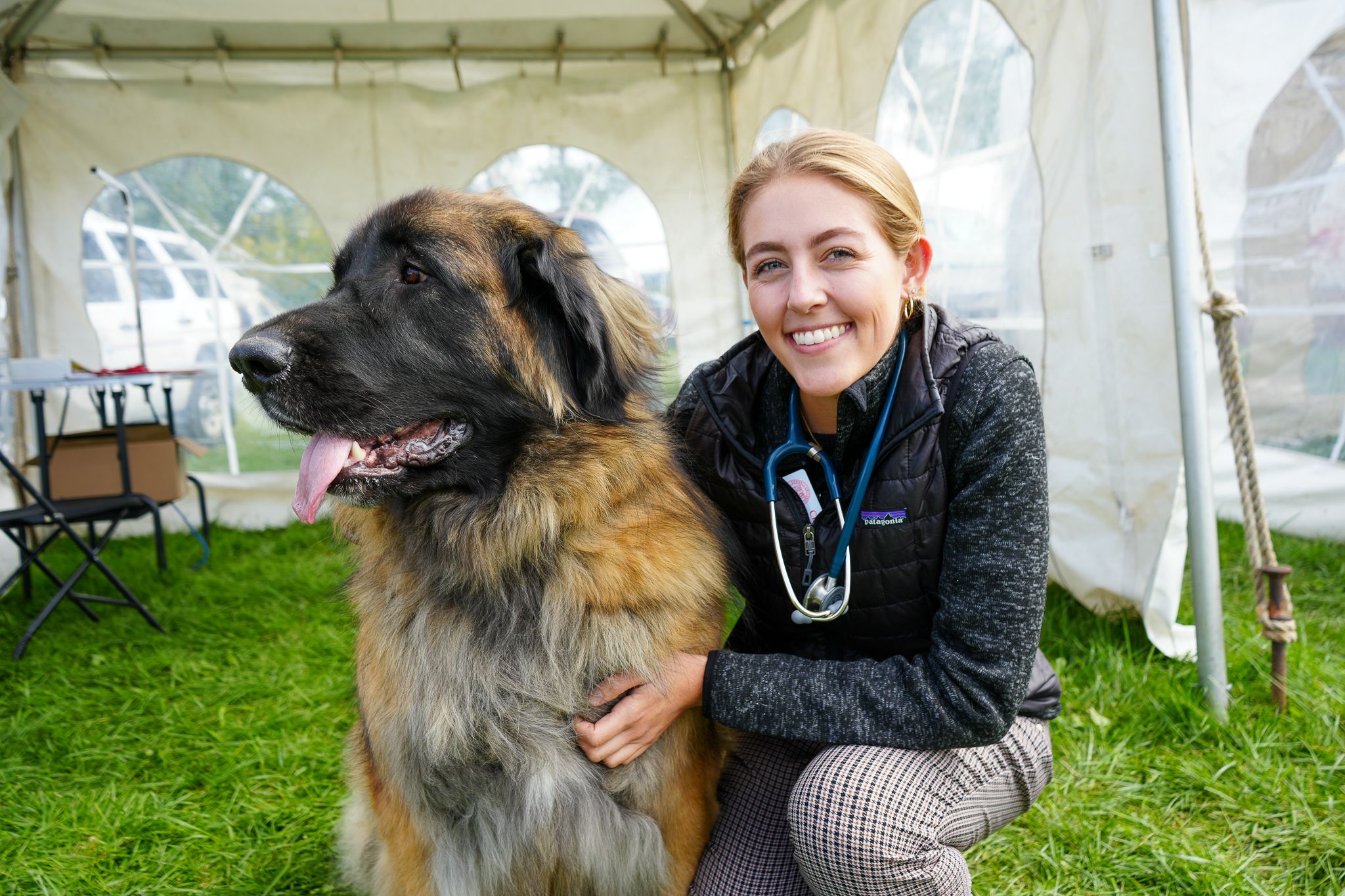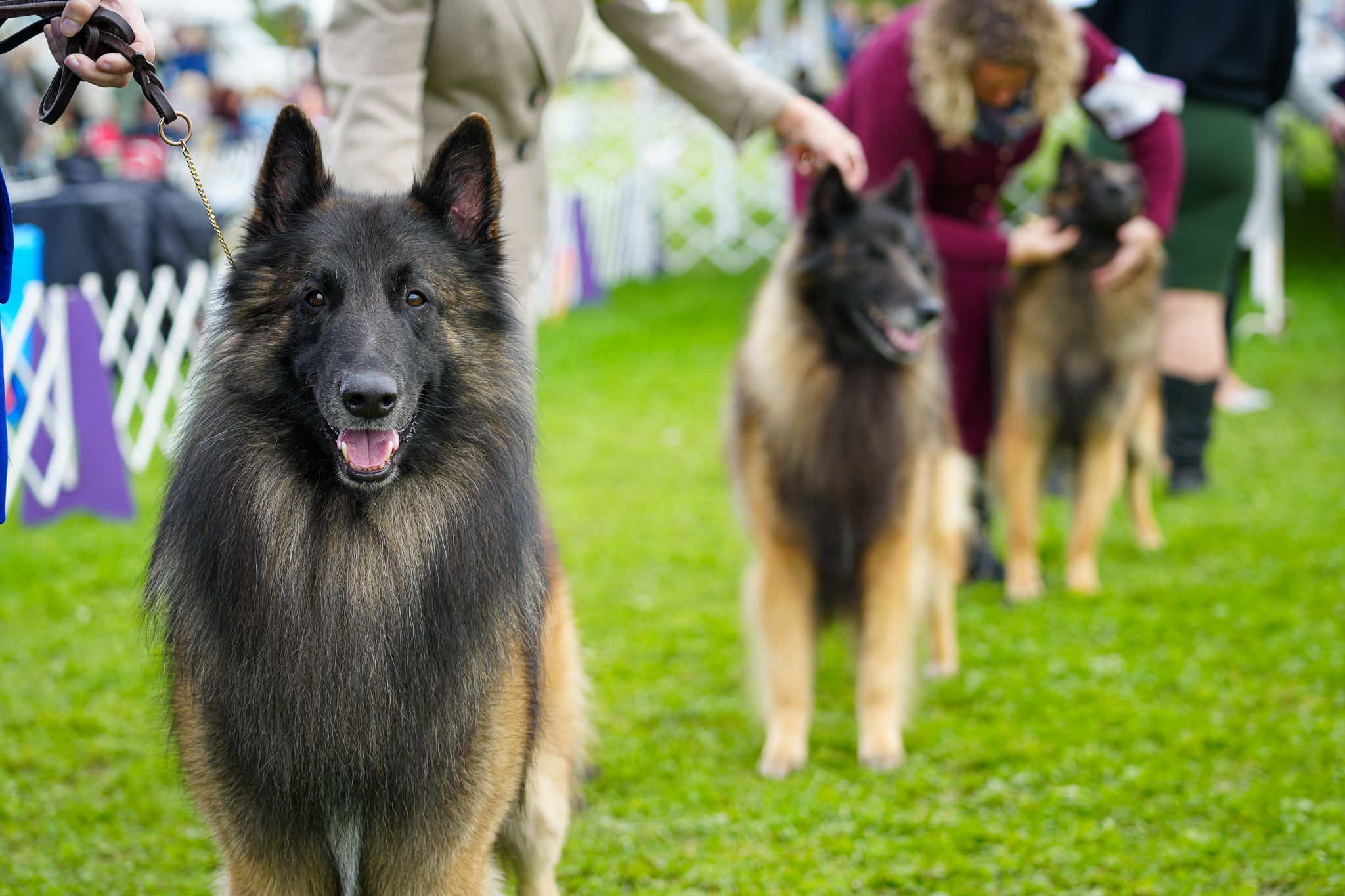Cornell veterinary students gain shadowing experience at the Wine Country Circuit Dog Show
The veterinary college has been a proud partner of the dog show since 2021
Third-year veterinary student Hannah Flamme poses with a Leonberger at the 36th annual Wine Country Circuit Dog Show. (Photo by John Enright/CVM)

For the 36th annual Wine Country Circuit Dog Show, 20 veterinary students from Cornell University College of Veterinary Medicine (Cornell) attended and shadowed veterinarians to gain hands-on experience and up-close look at purebred show dogs. The show was held from September 29 to October 1 at Sampson State Park in Romulus, New York.
Serving as the show’s official veterinary care provider, Cornell brings together leading canine experts from across the veterinary college’s clinical consultation units — including the Cornell University Hospital for Animals (CUHA) and the Cornell Margaret and Richard Riney Canine Health Center (RCHC) based in Ithaca, New York, and the Cornell University Veterinary Specialists (CUVS), based in Stamford, Connecticut.
According to an organizational release,1 the show has a mentorship program that pairs Cornell veterinary students with breeders, judges, and exhibitors from kennel clubs. Inspired by a similar program at Tufts University, the mentorships help familiarize veterinary students with some of the 200 breeds the American Kennel Club recognizes as purebreds. The program with Cornell was started in 2021 by Sue Hamlin, a now-retired administrative manager at Cornell’s Baker Institute for Animal Health.
Show dogs line up for the conformation event at the Wine Country Circuit Dog Show, where they are measured by how closely they conform to the standard of their particular breed. (Photo by John Enright/CVM)

In addition to the students participating in the mentorship program, another group shadowed Cornell veterinarians who provided free medical care to show dogs and answered questions from owners. While shadowing neurology resident Patricia Lawler, DVM, veterinary student Hannah Flamme saw an English Labrador retriever come into the vet tent with a paw laceration that happened before the competition. Despite administering antibiotics, his owners were concerned that it wasn’t healing. Flamme was able to shadow Lawler and give the lab a physical exam on the paw.
“She was an excellent teacher,” Flamme said of Lawler in the Cornell Chronicle.2 “I really admired her communication skills. She did a really excellent job of briefly, eloquently explaining to owners exactly what was going on with their animal.”
“Luckily, it was at a point that we didn’t really have to do very much,” Flamme said in the release. “But I think they were just happy to hear from a veterinary professional that the injury wasn’t something that had to be treated urgently. It gave them peace of mind that they were doing the correct thing for a very prized show animal.”
She added, “I know that I will have clients in the breeding and showing industry someday. I now have a greater appreciation for what they do and the time and energy and care and compassion that goes into what they do.”1
Reference
- Cornell veterinary students get hands-on experience at 36th annual Wine Country Circuit Dog Show. News release. Cornell University College of Veterinary Medicine. Published October 20, 2022. Accessed October 21, 2022. [email]
- Vet students get hands-on experience at local dog show. Cornell Chronicle. Published October 11, 2022. Accessed October 21, 2022. https://news.cornell.edu/stories/2022/10/vet-students-get-hands-experience-local-dog-show